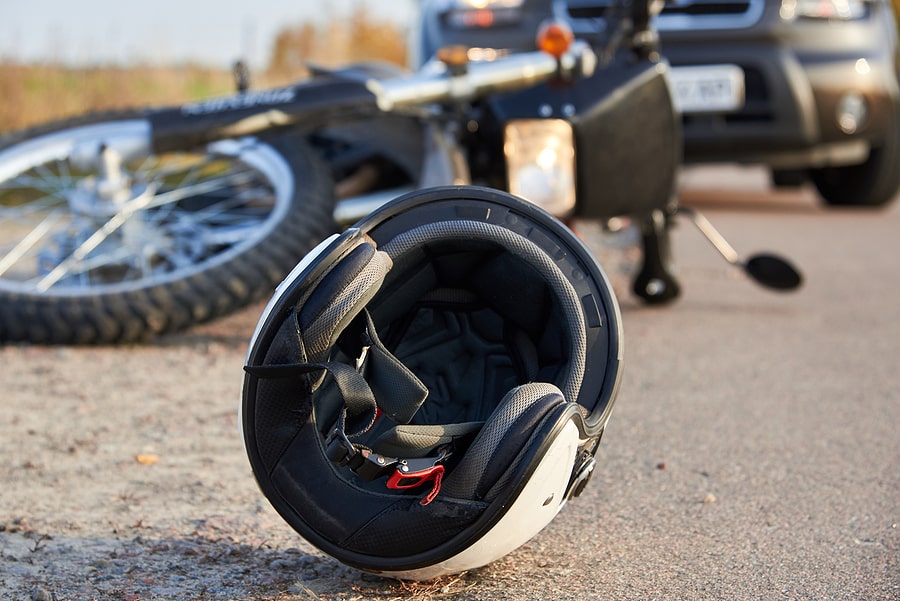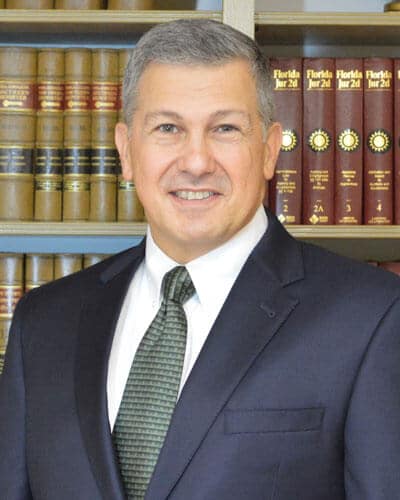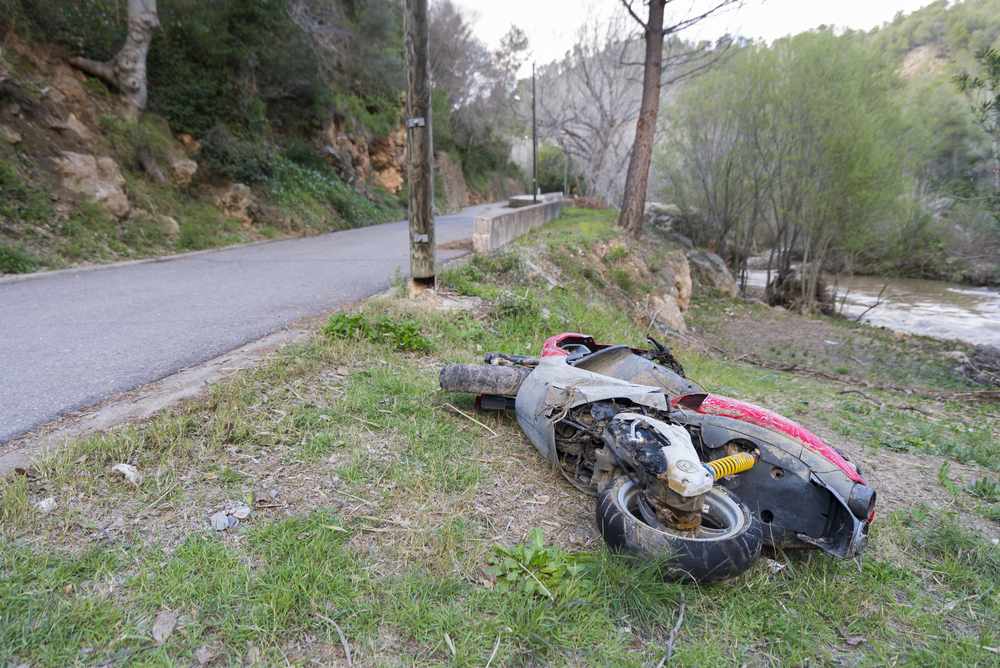If you ride a motorcycle, you know just how important it is to prioritize your safety. The fact is that motorcycles simply do not provide the same protections as larger vehicles. That’s why you wear your helmet, keep your bike in good condition, and do your part to let other drivers know you are there.
Unfortunately, many drivers simply don’t understand the dangers motorcyclists face. When a driver becomes distracted, is in a hurry, or doesn’t pay attention, they risk the lives of others. If a motorcycle accident injured you or someone you love, you may have a right to financial compensation.
To learn more, contact an experienced New Port Richey motorcycle accident attorney.
The biggest danger motorcycle riders face
If you ask anyone why motorcycle accidents happen, they’ll likely blame the rider. Bikers unjustly have a reputation for dangerous driving and risky behavior. The reality is that other drivers cause most motorcycle accidents.
Common causes of motorcycle accidents include:
Failure to yield the right of way
The National Highway Traffic Safety Administration reports that most multi-vehicle motorcycle accidents happen because the driver of a car or truck did not see the motorcycle. Accidents can happen when a driver attempts to change lanes without clearing their blindspots or when they turn into the path of an oncoming motorcycle.
Drivers will use the invalid excuse, “I didn’t see them.” Drivers are responsible for constantly scanning their surroundings and recognizing when a smaller vehicle enters their blind spots. As a driver, failure to be aware of your surroundings is pure and simple negligence.
Following too closely
Allow ample space between your vehicle and other drivers. Allowing a buffer in front of your vehicle provides you with time to react should the driver in front of you slow down or come to a sudden stop. Plus, it’s the law.
In Florida, the law states that no vehicle should drive closer than what is reasonable and prudent, considering speed and weather conditions. Generally, the three-second rule is a good way to judge whether you allow enough space. When you follow too closely, you increase the likelihood of a rear-end collision.
Rear-end collisions are one of the most common types of motor vehicle accidents. And while they may be nothing more than a minor bump to a car or a truck, that “small bump” can be enough to drag a motorcycle under a larger vehicle.
Distracted driving
The number one cause of all motor vehicle accidents is distracted driving. Texting and driving and talking on the phone remain big concerns. When a driver answers a text, that’s at least five seconds where their eyes are not on the road. In five seconds, a light can turn red, traffic can slow down, or a motorcycle can enter the motorist’s blind spot.
Distracted driving is another reason drivers claim, “I didn’t see them.”
Other causes of distracted driving include:
- Talking to passengers in the vehicle
- Adjusting the radio
- Eating
- Putting on makeup
- Looking at billboards, traffic, or other distractions outside the vehicle
Speeding
Countless lives end every year as a result of speeding drivers. Speeding is dangerous, yet it is one that drivers continue to justify every day. Excess speeds increase stopping distance, decrease reaction time, and exponentially increase the severity of an accident. Sadly, if a motorcyclist collides with a speeding vehicle, the odds of survival are low.
Driving under the influence
Thirty-two people die every single day because of the selfish actions of a drunk driver. Driving under the influence severely interferes with a person’s ability to act appropriately and make rational decisions. Motorists who are under the influence pose an extreme danger to other occupants of the road.
Some of the behaviors of a drunk driver include:
- Sudden and unexplained stopping
- Swerving into adjacent lanes
- Failure to use safety devices, including lights and blinkers
- Driving too fast or too slow for conditions
- Failing to stop at stop signs and traffic signals
- Drifting onto the highway shoulder or adjacent bike lanes
Three ways to prove fault after a motorcycle accident
 The law allows you to seek monetary damages for your injuries if the insurance company determines you are not at fault. However, insurance companies don’t readily jump up and offer money. Even if it is clear their policyholder was at fault, often, they will look for ways to diminish your claim or even place some of the blame on you. The good news is, that an experienced lawyer can help you gather evidence to prove your case and fight for the compensation you deserve. Common ways to prove fault in an accident include:
The law allows you to seek monetary damages for your injuries if the insurance company determines you are not at fault. However, insurance companies don’t readily jump up and offer money. Even if it is clear their policyholder was at fault, often, they will look for ways to diminish your claim or even place some of the blame on you. The good news is, that an experienced lawyer can help you gather evidence to prove your case and fight for the compensation you deserve. Common ways to prove fault in an accident include:
Evidence
The bulk of any motorcycle case relies on evidence. Evidence is key to showing what happened in an accident. Evidence may exist at the scene or emerge during discovery. An experienced attorney can determine what evidence is relevant to your case.
Examples of evidence your attorney may use in your motorcycle accident case include:
- Photographs taken at the scene
- Surveillance video
- Proof of property damage
- Police reports
Eyewitness testimony
If someone stops to help after the accident, get their contact information. Eyewitness testimony can provide details about the accident that are otherwise missing. Even if no witnesses stopped, maybe others saw the accident or the driver’s actions leading up to the accident. In this case, the police may have a record of reports from these witnesses, or your attorney may have other means to track these people down.
The other driver’s records
In some cases, your attorney will look closely at the other driver’s records. These records can indicate what the driver was doing during the accident, shed light on past behavior, or provide details as to what may have caused the accident.
These records may include:
- Cell phone records to prove if the driver was on the phone at the time of the accident.
- DMV records to show whether the driver has a history of dangerous driving.
- Police records to see if the driver received any recent driving citations, including the day of the accident.
- Medical records to determine if a preexisting health condition could have contributed to the accident.
- Employment records, if the driver was on the job, and their training or disciplinary records could provide information.
Additional parties who may also be at fault
In some cases, more than one party is to blame for an accident. On top of that, these parties may not have even been present at the time of the accident. The costs of a motorcycle accident can quickly add up, so you need a lawyer to identify all responsible parties. Other parties who may hold financial responsibility include:
A third-party driver
Many times, the actions of one driver are the result of the actions of another driver. For example, if a driver suddenly merges into a lane of traffic, causing another vehicle to swerve and hit you, the first driver may be partially or fully at fault for the accident.
The insurance company will consider whether the merging driver’s actions directly led to the actions of the second driver. Further, they will try to determine if the person who hit could have responded differently. Depending on what exactly happened, one or both parties may be liable.
The other driver’s employer
If the other driver was on the job at the time of the accident, their employer may have a legal duty to cover your injuries. Additionally, if the accident resulted from poor training or negligent hiring processes, you might hold the employer at fault. Regardless of whether the employer was negligent or just provides secondary coverage, you should have access to their coverage if your costs exceed the driver’s policy.
A vehicle or parts manufacturer
Accidents are sometimes not a person’s fault but a company’s. If the accident happened because of a mechanical failure (of the other driver’s vehicle or your bike), look at why that failure happened. The vehicle owner would be liable if the accident occurred because of improper maintenance. However, if the accident resulted from a defective part, the part manufacturer may hold financial responsibility.
The state or local government
There are many things motorcycle riders have to watch out for when they are on the road. Among these are the weather, other drivers, and road conditions. When it comes to the latter, the state or local government must maintain the roadways in a safe condition for all motorists.
Warning signs should indicate unsafe roads. Officials should fix road defects, such as loose gravel or potholes, immediately. If the government fails to do anything, you may have a right to sue them for damages.
What is a no-fault accident?
If you live in a no-fault state, you may wonder, “Does it matter who was at fault?” The answer is yes. Currently, 12 states have no-fault insurance laws. These states require drivers to carry personal injury protection (PIP). This means if you are in an accident, your own insurance will pay for your medical costs and lost wages, regardless of who was at fault.
Your PIP policy will only pay out up to your limits. In Florida, this might top out at $10,000. That may not even be enough to cover the cost of an emergency room visit.
However, you can file a claim against the other party if your injuries are severe. In this case, you will have to prove fault to recover damages.
How an experienced motorcycle attorney can help your case
Motorcycle accidents can have devastating consequences. Far too often, these accidents result in serious injury or death. The costs associated with these accidents can quickly add up. That’s why you must stand up for your right to financial compensation.
If you or someone you love has been in a recent accident, one of the best things you can do is surround yourself with people you trust. This includes your legal team. Your legal team will fight for you and help you gain the resources to move forward after an accident.
You can expect your attorney to:
-

Motorcycle Accident Attorney, John E. Napolitano Answer questions regarding the value and status of your case
- Investigate the accident and gather evidence
- Help you connect with doctors and other resources
- Talk to your care providers
- Set up alternative billing arrangements
- Negotiate with the insurance company
- Provide you with consistent, up-to-date accounting of your costs
- Schedule and conduct depositions
- Organize and attend mediation
- Interview expert witnesses
- Represent you in court
- Negotiate and pay final medical costs
Take control of your future
Coping with a motorcycle accident is not an easy process. There will be times when you feel overwhelmed or don’t know what to do. Contact an experienced motorcycle accident attorney who can provide guidance and give you support as you move through this difficult chapter. You are not alone in this. Don’t wait to get the help you need.



